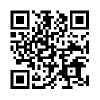The best I can tell, Dojo’s dojox.mobile.Charts2D do not auto-resize on their own when the phone’s orientation changes. I posted a question on how to get around this on the Dojo Community Forum and never got an answer. So, I had to cobble together my own solution.
I have to point out that the functionality I built by hand is inherent in Flex and Silverlight, and you wouldn’t even bat an eyelash thinking about this. So, from a productivity standpoint I spent about double and maybe even triple the time I should have needed in order to sort through why things weren’t working as they should, and to build my own best practice for handling it. 
I do consider what I built as a hack, so caveat emptor. It should at least give you a good starting point to improve on what I’ve already done. There are some important things to note.
- Here’s a sample demonstrating the functionality: https://andygup.net/samples/realestate/
- Dojo does not provide any State properties on the View. So, I had to build that.
- Dojo does not provide any way to bind a dijit to a mobile View. In other words, this enables the Chart to take action automatically when something happens in the View. Check…yep, I bolted that in.
- Dojo, as far as I know, does not provide a way to detect when the phone’s orientation changes. So you have to listen for that at the window object level. I’m fairly certain that the pattern I used is not completely reliable across all platforms, but it’s what I had to work with. So, I built that too.
- I also had to detect if there was no orientation change prior to a View transition. This was so that I didn’t unnecessarily redraw the chart and make it appear to flicker. This check was important because my chart is in a secondary View. There seems to be a bug in charts redraw() function in that the chart may self destruct if you try to redraw it from a different View.
- There’s a bug in the Android native browser that passes the previous orientation event object to the listener. You actually have to set an event timer so that you retrieve the final, and most recent, orientation event object.
pieChart = new com.agup.PieChart("chart1","statsView").pieChart;
<div id="chart1ParentDiv" dojoType="dojox.mobile.RoundRect">
<div id="chart1" style="width:100%; height: 350px;"></div>
</div>
Here’s the PieChart Class that I built to encapsulate the functionality I described above:
dojo.declare("com.agup.PieChart",null,{
pieChart:null,
orientationChanged:null,
constructor:function(chartDiv,chartView){
this.pieChart = this._createChart(chartDiv);
this.orientationChanged = false;
if(chartView)this._setTransitionListener(chartView);
if(chartView)this._setOrientationListener();
},
_createChart:function(chartDiv){
//create the chart
//Had problems with using just HTML markup, so creating it here and piping to DIV
var pieChart = new dojox.charting.Chart2D(chartDiv);
//set the theme
pieChart.setTheme(dojox.charting.themes.PlotKit.blue);
//add plot
pieChart.addPlot("default", {
type: "Pie",
radius: 100,
fontColor: "black",
labelOffset: "-20"
});
pieChart.isVisible = false; //NOTE: this is a new public property that we inject
return pieChart;
},
_setTransitionListener:function(/* DIV of dojox.mobile.View where chart resides - typeof String */view){
var test = dijit.byId(view);
var pieChart = this.pieChart;
dojo.connect(test, "onAfterTransitionIn",null,
dojo.hitch(this,function(){
pieChart.isVisible = true;
if(pieChart != null && this.orientationChanged == true)var time = setTimeout(function(){pieChart.resize()},700);
})
);
dojo.connect(test, "onAfterTransitionOut",null,
function(){
pieChart.isVisible = false;
}
);
},
_setOrientationListener:function(){
var supportsOrientationChange = "onorientationchange" in window,
orientationEvent = supportsOrientationChange ? "orientationchange" : "resize";
window.addEventListener(orientationEvent,
dojo.hitch(this,function(){
var pieChart = this.pieChart;
var orientationChanged = this.orientationChanged;
if(pieChart != null && pieChart.isVisible == false){
orientationChanged = true;
}
if(pieChart != null && pieChart.isVisible == true){
orientationChanged = false;
var time = setTimeout(function(){pieChart.resize()},700);
}
}), false);
}
});